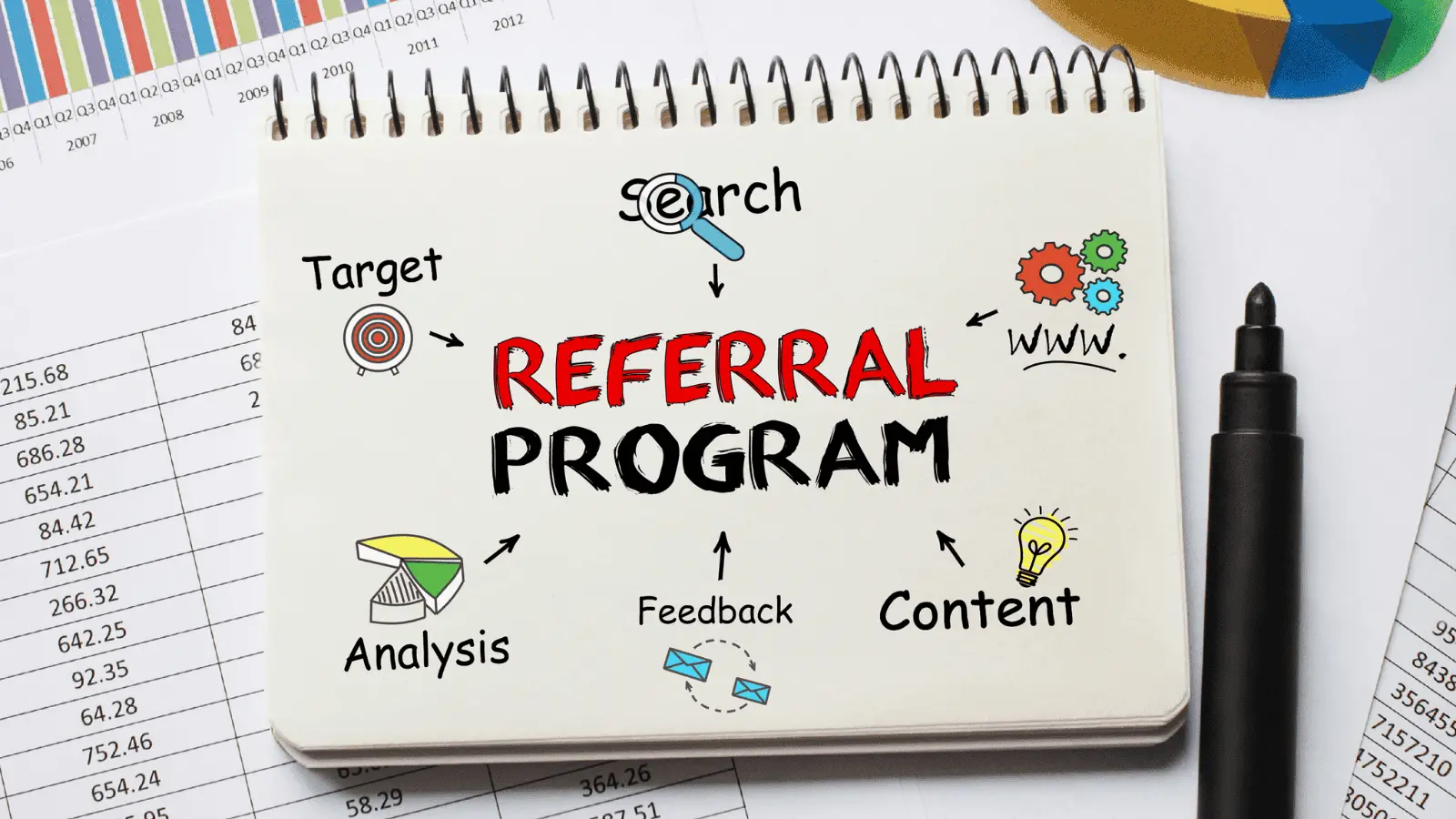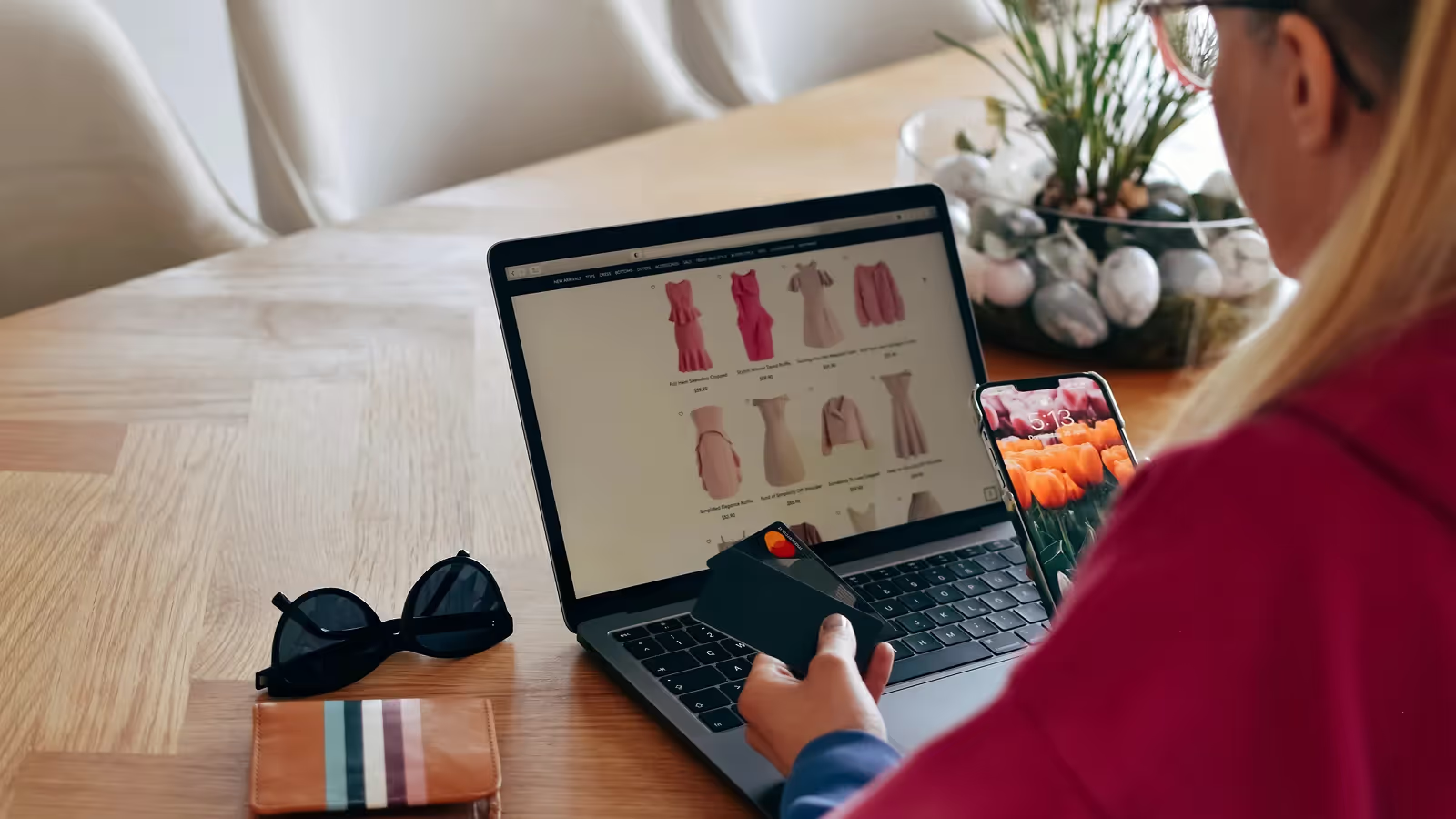.avif)
.avif)
Customer acquisition feels exciting in the early stages. Ads perform well, new users land on your site, and conversions look promising. But a few weeks in, reality hits, engagement slows, cart abandonment creeps back, and acquiring the next customer becomes more expensive than the last.
At the same time, user behavior is shifting. 80% of social media marketers believe consumers will buy more directly through social apps than on brand websites or marketplaces, making it harder to hold attention and build loyalty through traditional channels.
That’s the point many growing eCommerce brands reach, a tipping point where scaling isn’t just about reaching more people, but about keeping the right ones close. Retention, advocacy, and word-of-mouth become essential. This is where a business-to-business (B2B) referral program can make a measurable difference, one that’s built on credibility, existing relationships, and long-term value rather than one-time promotions.
What Is a Business-to-Business (B2B) Referral Program
A business-to-business (B2B) referral program is a structured approach where your existing customers, partners, or affiliates introduce your products or services to other businesses. In the eCommerce space, these programs do more than bring in new leads; they create opportunities for building trust, reducing acquisition costs, and strengthening relationships through recommendations that carry more credibility than ads or cold outreach.
Unlike referral programs aimed at individual consumers, which often rely on quick perks or one-off discounts, B2B referral programs are designed for long-term value. They encourage agencies, resellers, and satisfied customers to share their offerings in exchange for benefits that align with business needs, such as extended service access, enhanced features, or other incentives that support ongoing collaboration.
Why Do B2B Referral Programs Matter for eCommerce Brands?
For eCommerce brands, particularly those operating on platforms like Shopify or WooCommerce, referrals do more than add names to a lead list. They create a pathway for building trust in a market where buyers are increasingly cautious and resistant to cold outreach.
When a recommendation comes from a partner, agency, or existing customer who has already worked with your product, it carries a level of credibility that traditional advertising rarely achieves.
These programs also provide a cost-effective way to acquire customers. Instead of pouring resources into paid ads or broad campaigns, you’re leveraging relationships that already exist within your network, which often translates into higher-quality leads at a lower acquisition cost.
Equally important, B2B referrals deepen engagement with the people making them. By involving partners, resellers, or satisfied customers in your growth strategy, you reinforce their connection to your brand and turn them into long-term advocates, not just one-time promoters.
Why Referral Programs Outperform Traditional Acquisition Tactics in B2B eCommerce
.webp)
If your paid campaigns are bringing in traffic but not meaningful conversions, you’re not alone. Many D2C and B2B eCommerce brands are facing the same challenge: rising customer acquisition costs (CAC) and flat returns on ad spend. This is where referral programs often deliver stronger results because they work differently from ads or email blasts.
Speeds Up Conversion Through Built-In Trust
When a recommendation comes from someone within a prospect’s network, whether it’s a peer, a partner, or another business they already work with, it carries far more weight than a cold ad. In B2B, where purchase decisions often involve multiple stakeholders and longer evaluation cycles, this credibility can shorten the path to conversion significantly.
Brings In High-Intent Leads
Unlike cold traffic, referrals aren’t coming to you blind. They’ve likely had a conversation about your product or seen it in action through a trusted contact. This familiarity makes them more open to engaging with your brand, resulting in stronger lead quality and often shorter sales cycles.
Strengthens Retention, Not Just Acquisition
Referrers don’t just help you bring in new business; they often become more engaged themselves. When someone refers to your product, they’re putting their reputation on the line, which makes them more likely to deepen their connection with your brand over time.
Reduces Acquisition Costs Without Sacrificing Quality
Paid channels require constant bidding against competitors and algorithm changes, which drive up costs. Referrals tap into networks you’ve already built with customers, partners, or affiliates, creating a lower-cost acquisition path that often produces a better return on investment.
Builds Sustainable, Compounding Growth
Referral programs, when structured well, build on existing relationships and compound over time. Unlike ad campaigns that need constant funding and creative refreshes, a referral engine can continue to deliver value as advocates bring in new, like-minded customers.
In B2B, referrals work because they reflect how business decisions are made through recommendations from people you trust. That makes them less of a quick acquisition tactic and more of a long-term growth lever.
Read: How to Create and Use Referral Links
What Makes a Great B2B Referral Program Work
.webp)
Referral programs in B2B eCommerce often underdeliver not because they’re a bad idea, but because they’re modeled like B2C campaigns. They get buried in menus, use irrelevant incentives, or create friction for already-busy users. The difference between a program that quietly exists and one that consistently delivers qualified leads comes down to five critical factors.
1. Rewards That Reflect Business Priorities
B2B buyers view incentives through the lens of long-term ROI, not one-off perks. This is where many programs miss the mark.
What tends to work better:
- Usage-based credits or discounts applied to future invoices
- Priority onboarding or support for referred accounts
- Access to premium features or integrations
These rewards make referrals feel like a strategic business decision instead of an isolated transaction.
2. Seamless, Zero-Hassle Sharing
Referral programs fail when they require extra effort. Busy users won’t jump through hoops for a link buried deep in an email. Stronger programs embed referrals into workflows:
- 1-click referral links within dashboards
- Pre-filled emails or messages for quick sharing
- No-login flows that minimize steps for referrers
This reduces friction and makes referrals a natural extension of daily interactions.
3. Real-Time Visibility and Feedback
Without visibility into outcomes, even motivated advocates lose interest.
Programs that keep participants engaged provide:
- Live status updates (e.g., when a referral signs up or converts)
- Dashboards showing rewards earned or pending
- Automated notifications for key milestones
Clear feedback loops reinforce effort and encourage repeat behavior.
4. Built for Long-Term Engagement
Referrals in B2B often happen gradually, not in one burst. Strong programs are designed for sustained participation:
- Tiered rewards for advocates who refer repeatedly
- Milestone recognition at referral count thresholds
- Exclusive access or benefits for loyal referrers
This approach nurtures advocacy over time instead of relying on single transactions.
5. Data That Drives Improvements
Tracking clicks alone doesn’t reveal program impact. A stronger framework measures:
- Referral-to-customer conversion rates
- Lifetime value (LTV) of referred accounts compared to other channels
- Top-performing referral sources and segments
These insights make it easier to refine strategies and invest in what delivers meaningful results.
For teams looking to implement these principles without heavy development overhead, platforms such as Nector provide ready-to-use referral infrastructure for Shopify and WooCommerce environments. Features like dual-sided rewards, built-in fraud detection, and real-time dashboards help brands run programs that are transparent, secure, and aligned with customer behavior while integrating with existing tools for smoother operations.A well-designed referral program isn’t just a growth tactic; it’s an extension of the customer experience. Building on these principles, the next critical step is crafting incentives that genuinely motivate your partners and customers.

Designing Incentives That Drive Action in B2B Referral Programs
In B2B eCommerce, referrals aren’t just about spreading the word; they’re about deepening relationships and reinforcing trust. But to make that happen, you need more than a generic rewards engine. You need a strategy grounded in how businesses make decisions. Unlike B2C, where quick perks can spark action, B2B referrals demand incentives that align with long-term value and customer priorities. Let’s walk through what that looks like in practice.
1. Match Incentives to the Impact of the Referral
Not every referral has the same value, and your rewards should reflect that. For instance, a referral that results in a small software subscription renewal isn’t the same as one that leads to a multi-year enterprise contract. To create a fair system that motivates advocates to bring high-quality leads, tier your rewards.
- Service credits or discounts for smaller referrals are easy, low-barrier incentives to keep everyday customers or resellers engaged.
- Co-marketing opportunities (like joint webinars, blog features, or case studies) for agencies or partners bringing in strategic accounts. This gives them visibility and positions them as thought leaders.
- Extended service access or premium features for referrals that lead to high-value contracts, making the benefit tied directly to their business growth.
This tiered approach works because it recognizes effort proportionally and shows advocates that your program isn’t just transactional, it’s responsive to their contribution level.
2. Tie Rewards to Meaningful Business Milestones
Rewarding too early (e.g., for simply submitting a lead) can backfire, leading to low-quality or unqualified referrals. Instead, connect incentives to stages in the sales process that signal real engagement, such as:
- A completed demo or consultation, showing the lead is genuinely interested.
- A signed contract, which confirms conversion.
- A renewal or expansion, reflecting long-term satisfaction with the product or service.
This approach ensures that referrers are motivated to bring in leads who are truly interested and likely to convert, rather than passing along casual contacts.
3. Balance Financial and Non-Financial Rewards
Cash or discounts are easy to give but may not always create deep engagement. Many B2B advocates, especially partners or long-term customers, are motivated by recognition, access, or influence. Adding these non-monetary elements can make your program more appealing:
- Priority onboarding or support for referred clients, which reflects well on the advocate and strengthens their relationship with the referred business.
- Early access to new features or tools for top referrers, giving them an operational advantage and making them feel like insiders.
- Public recognition through newsletters, community spotlights, or partner portals boosts their professional reputation.
These rewards make advocates feel like valued partners instead of just participants in a transactional exchange.
4. Layering Reward Types for Better Engagement
Your advocates won’t all be motivated by the same things. Agencies, resellers, and individual customers each bring different strengths to the table. Layering your reward system ensures you meet those diverse needs:
- Financial rewards (e.g., commissions) for resellers or agencies who drive volume and value.
- Recognition and exclusivity for long-time customers who advocate out of loyalty and want closer engagement with your brand.
- Collaborative benefits like co-branded campaigns for strategic partners who value visibility and joint opportunities.
5. Building for Repeatability, Not One-Off Wins
One-off incentives create bursts of activity, but they don’t sustain engagement. Strong referral programs are designed to encourage ongoing participation by:
- Automating reward delivery, so advocates don’t have to chase updates.
- Tracking referral quality over time, allowing you to refine incentives for better results.
- Providing real-time visibility (e.g., dashboards showing referral progress), keeping advocates engaged and informed.
This steady, transparent system turns occasional referrers into long-term partners who view your program as an extension of their relationship with your business.
Great B2B referral programs don’t come from guesswork. They’re built with a clear understanding of what your customers value, when they act, and why they stay loyal. By using a platform like Nector, Shopify, and WooCommerce, brands can launch smarter, event-triggered programs that recognize quality over quantity while offering the kind of rewards that drive long-term engagement.
So, how do you build a referral program that performs consistently in B2B?
How to Build an Effective B2B Referral Program
.webp)
A strong B2B referral program does not simply borrow tactics from B2C. It needs to account for longer sales cycles, multiple decision-makers, and relationships built on credibility rather than urgency. That is why your program structure matters just as much as the rewards, because in B2B, a one-size-fits-all approach rarely delivers meaningful results.
1. Start With the Right Advocates, Not Just the Obvious Ones
Before designing the program, clarify who you want referrals from and what motivates them. Existing customers are often a natural starting point, but do not overlook partners, agencies, or even your own sales reps.
Each of these groups interacts with your business differently:
- Customers might refer peers because your solution solved a pain point for them.
- Partners may see value in strengthening collaboration or co-marketing opportunities.
- Internal teams might refer because it helps them meet shared revenue or growth goals.
This is where many referral programs fail by treating all advocates the same. A segmented approach works better: map each audience’s role, influence, and needs, then design separate referral paths that feel relevant to them. For instance, a partner might prefer co-branded opportunities while a loyal customer may respond to exclusive feature access.
2. Make the Process Almost Invisible
Referrals often start with a simple conversation such as “This tool worked for us; it might help you too.” To keep that momentum going, the process should feel seamless.
This means:
- Embeddable referral links are accessible directly from dashboards or emails.
- CRM-integrated tracking so referrers do not need to follow up manually.
- A minimal-step journey that avoids complex forms or multi-step submissions that disrupt their workflow.
When the referral process feels like a natural extension of what they are already doing, participation increases. If advocates need to search for forms or request instructions, referrals become an extra task and lose their priority.
3. Align Incentives With the Journey, Not Just the Outcome
In B2B, referrals can take weeks or months to convert, involving demos, negotiations, and multiple approvals. If your program only rewards closed deals, referrers may lose interest long before the finish line.
Instead, layer your incentives to match key milestones:
- A small reward for submitting a qualified lead.
- A more substantial reward once the lead completes a demo or finalizes a contract.
- Recognition-based incentives, like spotlighting top referrers in newsletters or offering early feature access.
Why does this work? Because it creates a sense of progress. Advocates stay motivated when they see their efforts acknowledged throughout the process, not just at the end. It also filters out low-quality leads by encouraging referrers to focus on connections who are likely to engage meaningfully.
4. Measure More Than Just Referral Volume
A referral program is not just about counting leads; it is about understanding the quality and impact of those leads. From the outset, track:
- Who is referring, and which segments bring in the most valuable leads?
- Lead quality to see if referred accounts progress faster through the pipeline.
- Deal velocity to understand whether these referrals are shortening your sales cycle.
- Repeat behavior to check if advocates are returning or referring only once.
By integrating these metrics with your CRM or marketing automation tools, you gain visibility into what is working and where to improve. This also helps you refine your incentives, ensuring they reward quality rather than just volume.
5. Build for Repeatability, Not One-Off Results
It is easy to view a referral program as a quick way to fill the pipeline, but short-term campaigns rarely deliver lasting value. The most effective programs evolve into systems running quietly in the background and scaling with your business.
This means:
- Designing a structure that supports both recurring partner referrals and one-off customer recommendations.
- Building a backend that allows for easy updates to rules or incentives without starting from scratch.
- Creating transparency so participants know how and when they will be rewarded.
When your program runs as part of your growth infrastructure and not just as a temporary campaign, it becomes a sustainable channel for both acquisition and relationship-building.
In B2B, referrals happen because someone trusts your product enough to put their name behind it. A well-designed referral program does not just capture that trust; it amplifies it, turning advocates into long-term partners and fueling growth that lasts. Platforms like Nector provide examples of how businesses can structure programs around meaningful triggers, layered incentives, and segmented audiences, helping them build systems that deepen relationships over time.
.webp)
Wrapping up
B2B referral programs work best when they’re treated like a system, not a side project. A well-structured engine combines the right incentives, seamless tech, clear messaging, and consistent measurement. It’s not just about getting more referrals; it’s about getting the right kind of referrals that move the needle.
For growth-focused eCommerce brands, especially on platforms like Shopify and WooCommerce, building this kind of referral experience doesn’t have to mean more complexity. The right tools can help teams focus on value over volume, automate the heavy lifting, and make it easier to test, learn, and scale.
If you are exploring how to create a referral program that feels manageable and delivers measurable results, platforms like Nector offer useful ways to structure and automate these systems. They provide a practical starting point for testing, refining, and scaling your efforts without losing sight of what matters: building strong, trust-driven relationships that bring in the right kind of referrals.
FAQs
What is a B2B referral program, and how is it different from B2C?
A B2B referral program turns customers, partners, or affiliates into advocates who refer other businesses. Unlike B2C, it's built around trust, long-term value, and high-intent leads, not just discounts.
Why do B2B referral programs matter for eCommerce brands?
They reduce acquisition costs, bring in better-fit leads, and boost lifetime value, especially for brands on Shopify or WooCommerce where trust drives conversions more than ads.
What kind of incentives work best in B2B referral programs?
Business-aligned rewards like usage credits, co-marketing, or early access often outperform cash. Layer incentives by rewarding both qualified leads and closed deals.
How can we keep the referral process low-friction for our advocates?
Keep it seamless. Use 1-click links, pre-filled messages, and CRM integration. Avoid logins, forms, or emails; referrals should fit naturally into the advocate’s workflow.
How do we measure the success of a B2B referral program?
Track referral count, conversion rate, lead quality, deal velocity, and repeat referrers. Use integrated tools to monitor what’s driving real revenue, not just clicks.







